Tillandsia werneriana
Click thumbnails for full size, scaled to a new window.
Tillandsia werneriana
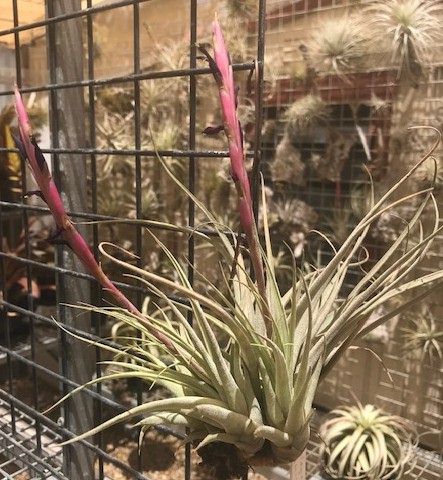
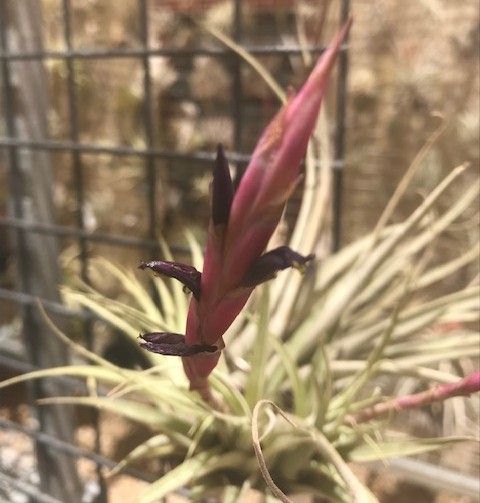
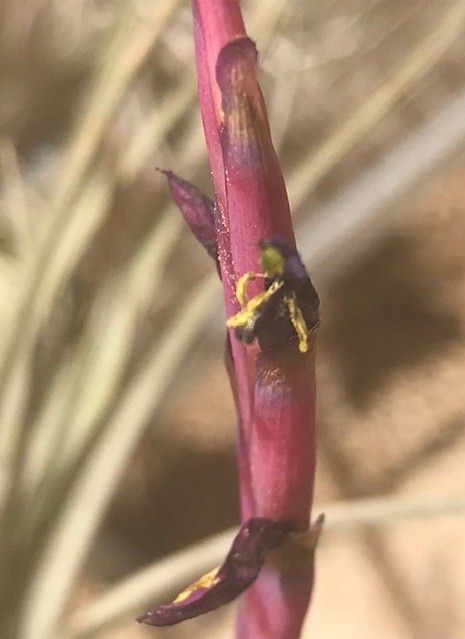
| Ray Clark 01/19 "werauhiana. T. andreetae?" |
Ray Clark ... "Not sure that I have done this plant justice with the iPhone but it is in flower and the actual flowers are a very deep intense purple, quite different to the run of the mill I think "
Derek Butcher ... "You sure confused me. I think the name is T. werneriana which has been the bane of my life for ages. See attached."
Tillandsia-like Vrieseas by Derek Butcher 2000
In Colombia, Ecuador, and northern parts of Peru there is a group of plants clearly related and which Jason Grant transferred from Vriesea to Tillandsia (See Phytologia (1993) 75(2): 170 -175).
Apparently this change was not generally accepted and is not part of The Binomial Listing by Harry Luther. The Germans continue to describe these plants as Vriesea eg. Vriesea gruberi by Ehlers in Die Bromelie 1/1999. But to add to my confusion Harry Luther used the genus Tillandsia with his revision of Tillandsia engleriana in Selbyana 20 (1) 13 (1999).
Clearly the botanists are confused too and now to my problem.
I had always considered Vriesea rauhii (or is it Tillandsia werneriana?) to be fairly common in collections whereas Vriesea andreettae ( or is it Tillandsia?) was rare.
In 1985 I purchased a Vriesea rauhii from Paul Isley at Rainforest Flora in Los Angeles. In the late 1980ís it flowered and after correspondence with Harry Luther and obtaining photocopies of herbarium specimens I decided the plant just had to be Vriesea andreettae even though I had no collection data.
One of the herbarium sheets was a Vriesea andreettae collected by Dennis Cathcart and Wally Berg in 1988, so when I saw Dennis had Vriesea rauhii for sale at Tropiflora in 1992 I felt I was on a winner. After all, Dennis must know the difference between the two species.
In late 1999 my Vriesea rauhii flowered but again I think I have Vriesea andreettae!
Photographs of Vriesea andreettae by Werner Rauh in BSIJ 1982 p266 and Vriesea rauhii in BSIJ 1988 p115 show that my identification of my plants to be Vriesea andreettae could well be correct. Please compare these photographs in the inflorescence, the leaf structure, and the indument with the photographs of my plants.
I am still on the search for a true Vriesea rauhii but do ask whether you have a plant of this name but have not doubted its identity!
Peter Tristram ... "Ray, consider T. andreetae. Lots of discussion on this little group! Seed of T. werneriana was collected by Jeff Kent at the type locality some years ago and a couple of maturing clones were brought to Oz in 2012. Itís quite different to these very white and succulent leafed ones with the bright pink bracts and almost black flowers. I have some new photos of it that I can send - soon."
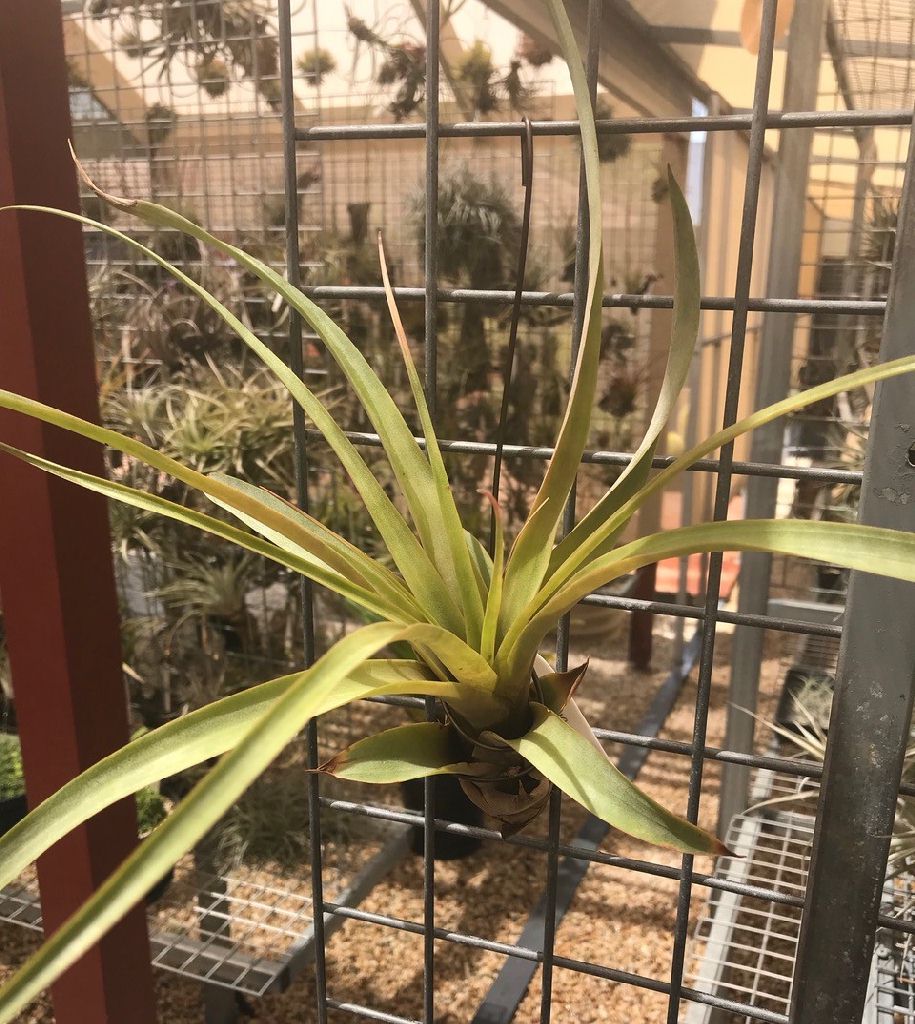
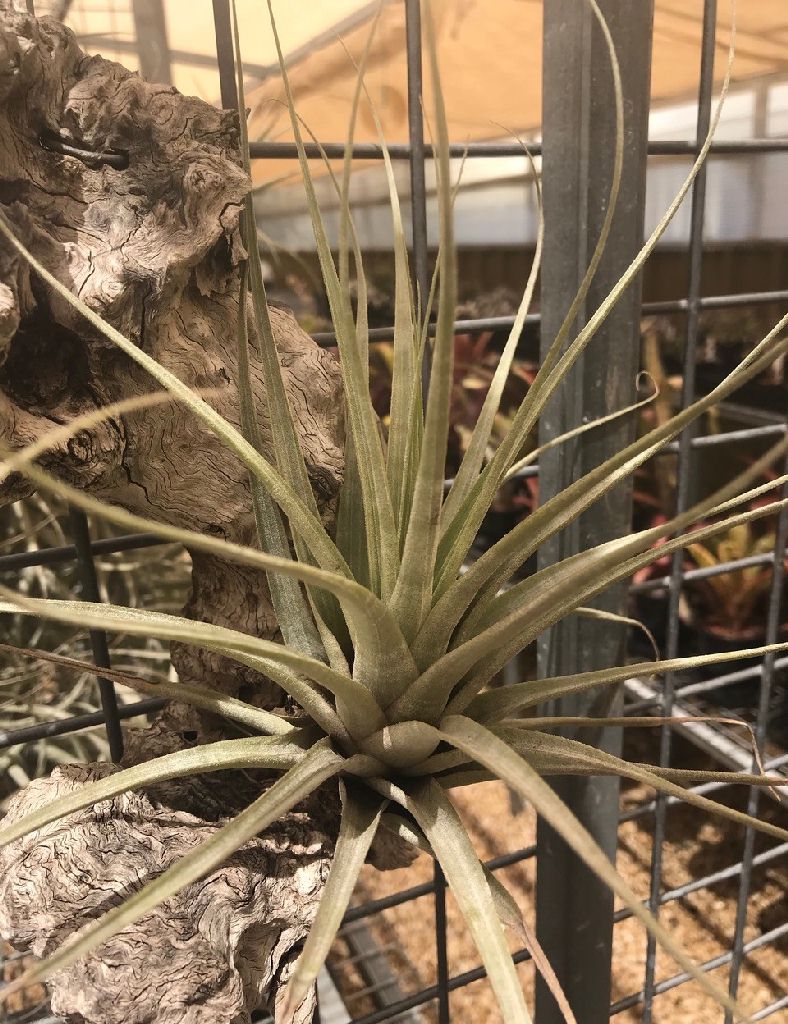 Ray Clark ... "Derek: Confusion indeed, when I checked the images of TV. werneriana, I donít agree either. My plant is quite scurfy by comparison.I am however growing a plant labelled as TV. werneriana (above left) which does compare quite closely.
Ray Clark ... "Derek: Confusion indeed, when I checked the images of TV. werneriana, I donít agree either. My plant is quite scurfy by comparison.I am however growing a plant labelled as TV. werneriana (above left) which does compare quite closely.
Then Peter suggested T. andreetae, guess what, the plant I am growing labelled thus (above right) is much closer, but I am not ready to change my labels just yet, more to learn me thinks. I am open to more input."
Greg Jones ... "Hi Ray. Not long ago Tillansia werneriana was considered Vriesea rauhii, in fact there is still an entry on FCBS showing V. rauhii. I suggest your name Tillandsia werauhiana is a combination of werneriana and rauhii. Then a couple of years back after much discussion on this group it was decided what we were growing as Tillandsi werneriana had been incorrectly named and what we were growing in Australia was actually Tillandsia andreetae. I know this because I brought a number of plants under both names and they are quite variable."
Ray Clark ... "Greg, good work mate, youíve just tied some loose ends together for me. The plant originally came from Chris so I have no reason to doubt the label until now. Interestingly the plant tag does have íTV. rauhiií in brackets underneath the main name, ( I copied the tag from Chris faithfully).
As you and Peter have suggested, it is probably T. andreetae. Thanks"
Alfonso Trudu ... "I am getting a bit confused here. The BCR list the following taxa:
werneriana J.R.Grant
werner-rauhiana P.Koide-Hyatt & H.Takizawa
andreettae (Rauh) J.R.Grant
Which are the key differences to separate these taxa?"
Peter Tristram ... "T. werner-rauhiana is nothing like the other two and not a TV Ė itís a Mexican cliff hanger. Itís not available that I know of, probably needing to be grown from seed. Olive Trevor bloomed a monster some years ago. It was written up in the BSI Journal, I think. There are lots of posts for the stories of the two TVs."
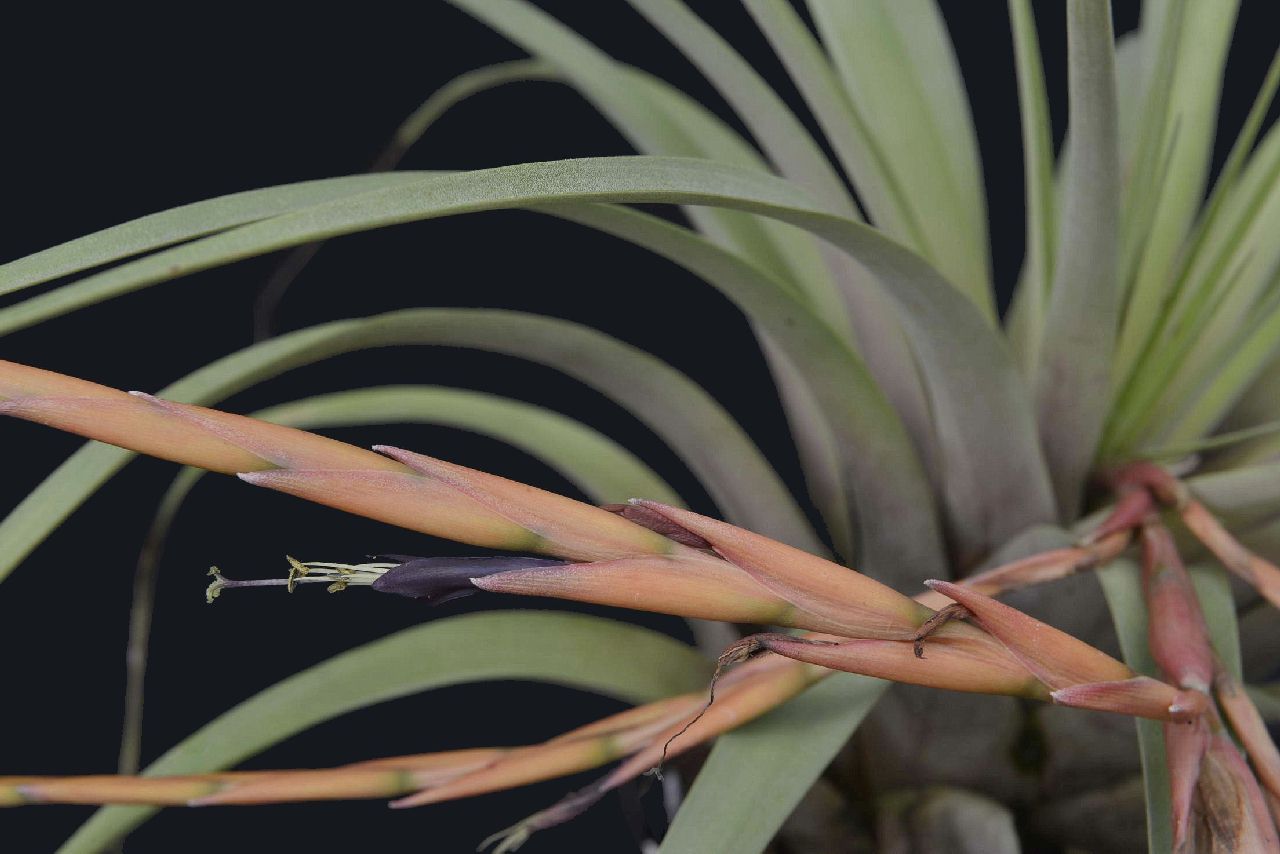
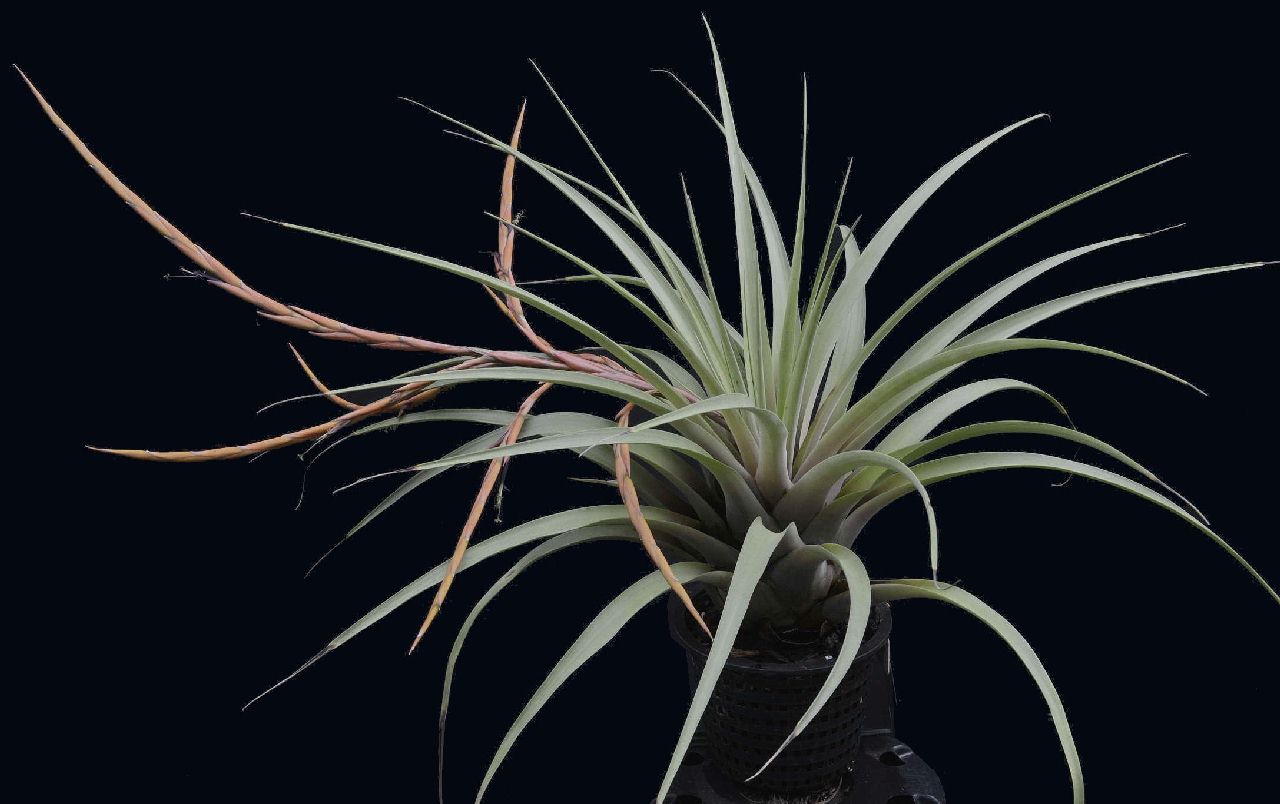
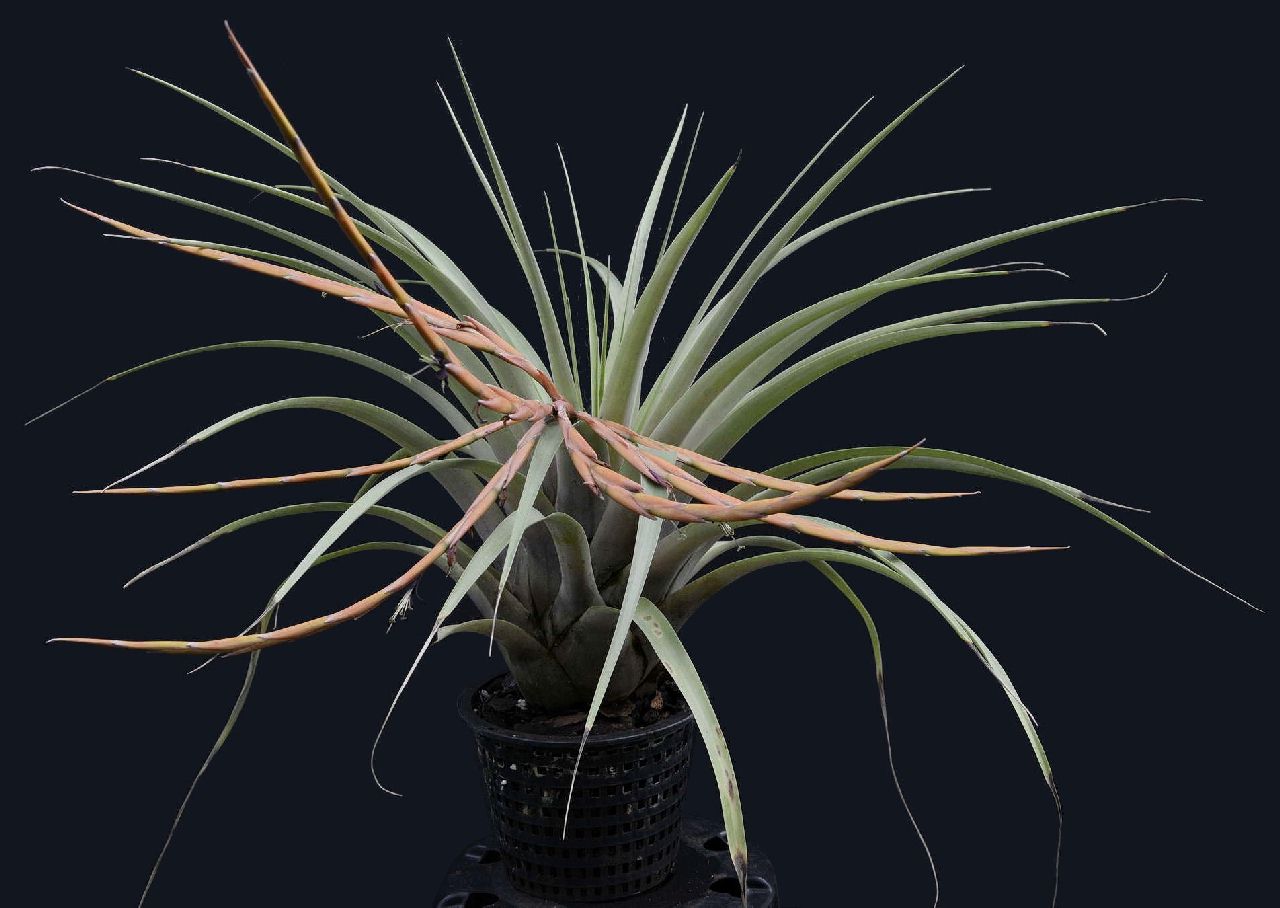
| Peter Tristram 01/19 ex. Jeff Kent |
Peter Tristram ... "TVs have caused all sorts of id issues for yonks! Misidentifications, such as the one featured in the Selby herbarium specimen in the DVD, ex me, ex Jeff Kent as Vr. rauhii but actually T. andreetae, abound. As I said, Jeff cleared the problem up by growing the real Vr. rauhii (now T. werneriana) from seed from the type locality. See Rauhís book for the pics that made me wonder. Only Chris and I have this plant, apart from a few that we have parted with. It is a softer plant, more like T. tequendamae in foliage, but pretty easy to grow and bloom. T. werneriana has only been recorded in a small habitat area unlike T. andreetae, which comes in many forms. I posted pics some years back of a bunch of different forms of mine from a variety of sources, which isnít on the dvd either, probably because Derek was still confused about the bane of his life! Iíll find them and repost under andreetae. It wasnít until I visited Jeff Kent in 2012 that the puzzle was finally solved, for me anyway. The posts about this date from Nov 2014. I remember that the Nutters who travelled to Ecuador a few years ago also posted great habitat photos of T. andreetae none of which feature on the dvd either.
Greg, the plant in the first pic looks like werneriana from Chris or me, the second andreetae.
Latest pics attached (above) Ė underexposed unfortunately."
Greg Jones ... "Hi Peter and others, just went and checked the "true werneriana" I got from Chris last Brisbane Till day to check if it had soft leaves more like T. tequendamae in foliage. Thankfully it does.
I also loked at the very first T/V I got from you more than 10 years ago as T/V rauhii "small form" with label additions of werneriana and andreetae as well as the other forms from you and Chris still labeled werneriana."
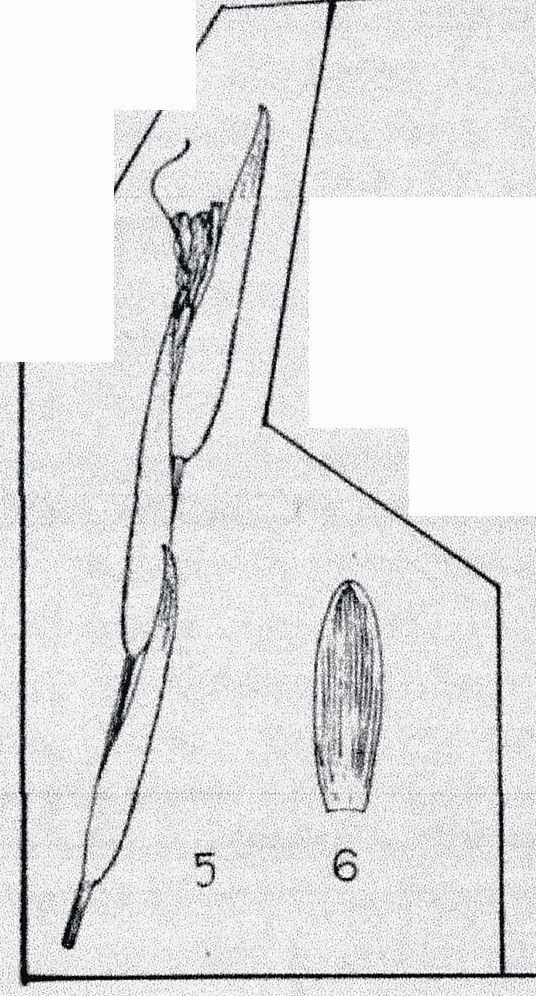
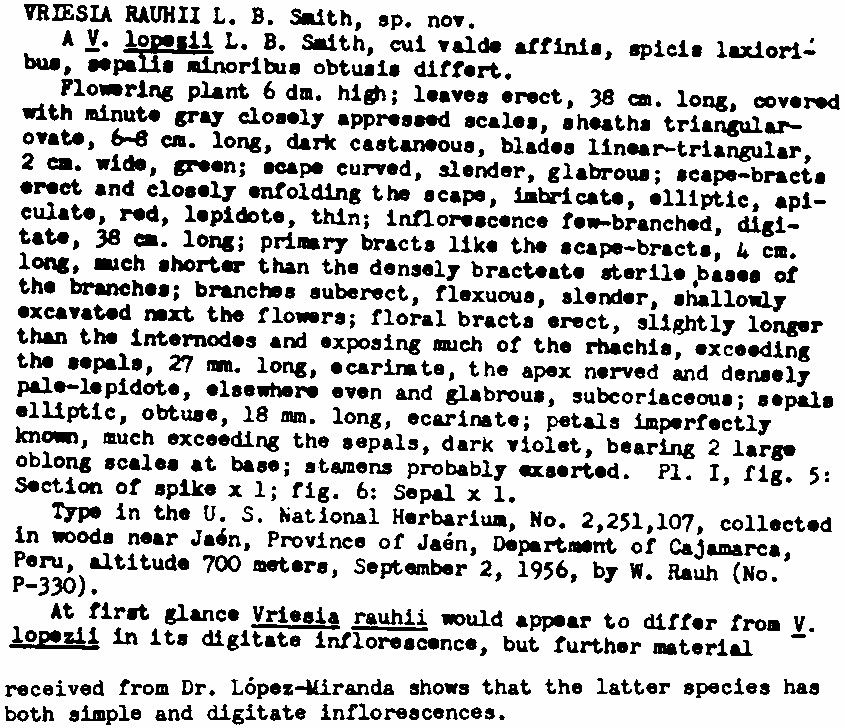
| TV werneriana as rauhii protologue plate - from Derek Butcher |
Derek Butcher ... "Back to basics. A botanists description is 80% on flower and 20% on plant which is why I concentrate on the flower part. Because of the variations you can get in finding a 'different' plant in the wild I try to restrict the number of photos I hold on my computer. Harry used to tell me the importance of the protologue and herbarium specimen. Details above for werneriana which seem to tally with your photo even to the "Floral bracts erect, slightly longer than the internodes and exposing much of the rhachis"
The main problem as I see it is that andreettae was described as a simple inflorescence whereas as Eric has pointed out is more likely to be found in the wild as a branched spike."
Chris Larson ... "Hi Greg. I briefly read through the thread. Iíve been too busy with Fb posts that I should never have entered into.
The plant you have is the one from Jeff Kent, the one Peter tells me was the only one Jeff Kent found when he went to the type locality.
Rayís plant possibly also came from me with writers fatigue when preparing for a show."
Peter Tristram ..."I think I need to point out that no true werneriana were in Oz until late 2012 (only a few released since the first blooming in 2014). Any plant sold as TV werneriana before then was probably one of the forms of what Eric confirmed as TV andreetae, (labelled Vr rauhii until the TVs were moved into Tillandsia). Unlike UD, I donít see an issue. The description was based on a single plant. I got andreetae from Eric and it can bloom with a branch or 2 (likely 20 or 30 for Bruce!). Now that more of the population has been explored, branching appears very common, as does the speciesí spread across into Peru. So any T. werneriana/Vr. rauhii obtained before very recent times is most likely a form of T. andreetae. Itís a very distinctive species. By the way, Greg, the small form I sell is the original Jeff Kent form in the Selby herbarium specimen, small plant but often lots of branches, though sometimes simple."

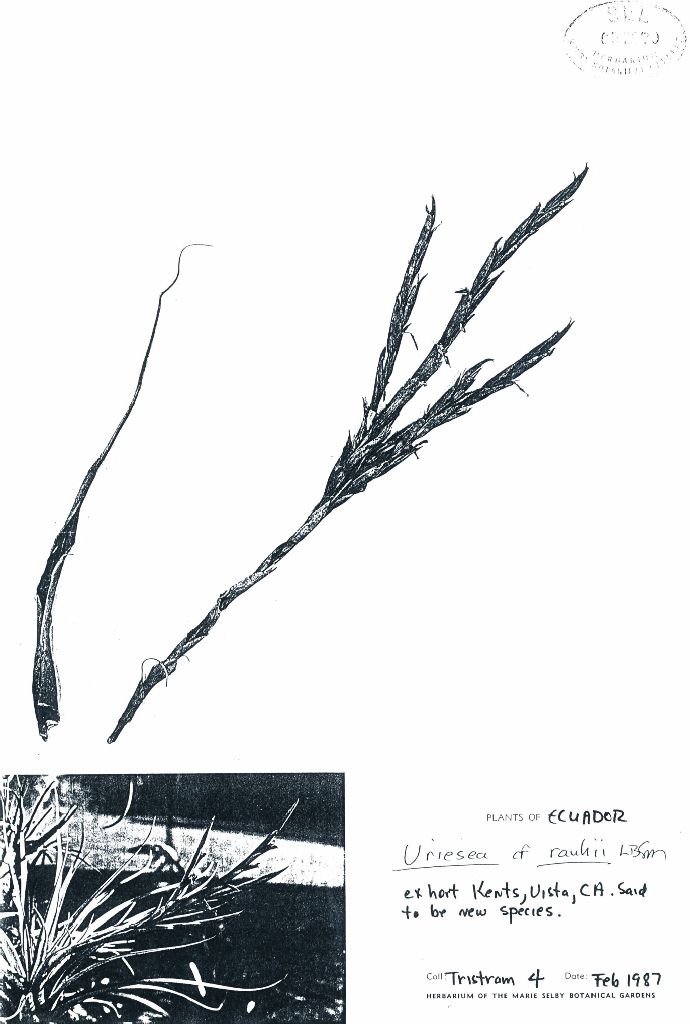
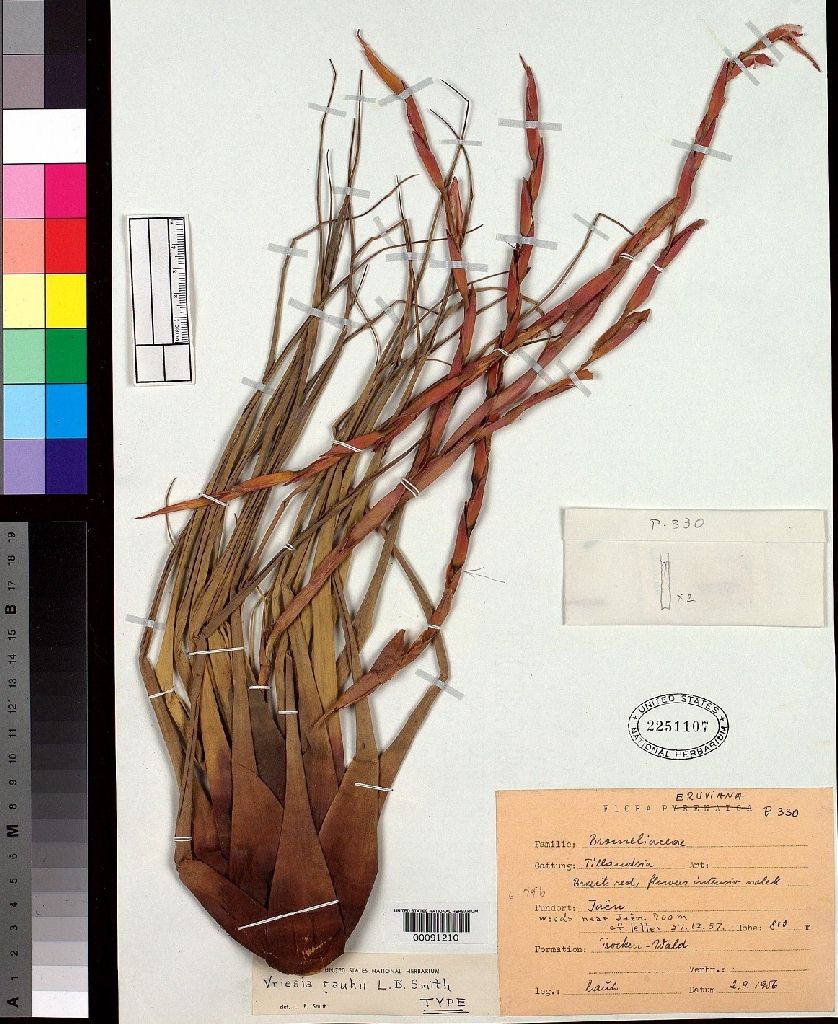

| Ross Little, andreetae in Ecuador 2015 |
werneriana herbarium Selby, US & HAO |
Ray Clark ... "What a mess Iíve stirred up!? Interesting nonetheless, Chris, yes, all three of the my plants in question have come directly from you over a period of time. Before you commented I had started to suspect that my Ďincorrectí label may have been done in haste. No harm done.
I had gotten into the habit of checking the DVD before posting but this time I didnít otherwise my original post would have been a question instead of showing off."
Chris Larson ... "No mess if everything becomes clearer in the process Ray. I think there are a few that donít understand these sp Ė and that should be better now. As I said, sorry Ė those 10-midnight labelling sessions (after doing an 8 hour day, coming home to family duties, then setting to work on plants) cause some issues.
But Peter it would be good if you could do some of your really nice photos of this sp. My last lot werenít as good, or at least no better, than whatís on the disc (see below)."
T/V werneriana from Derek Butcher's Till disk.
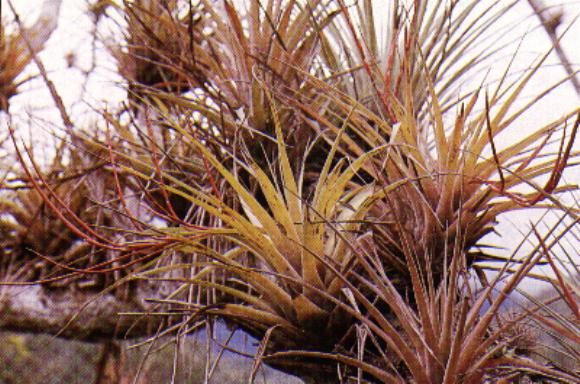
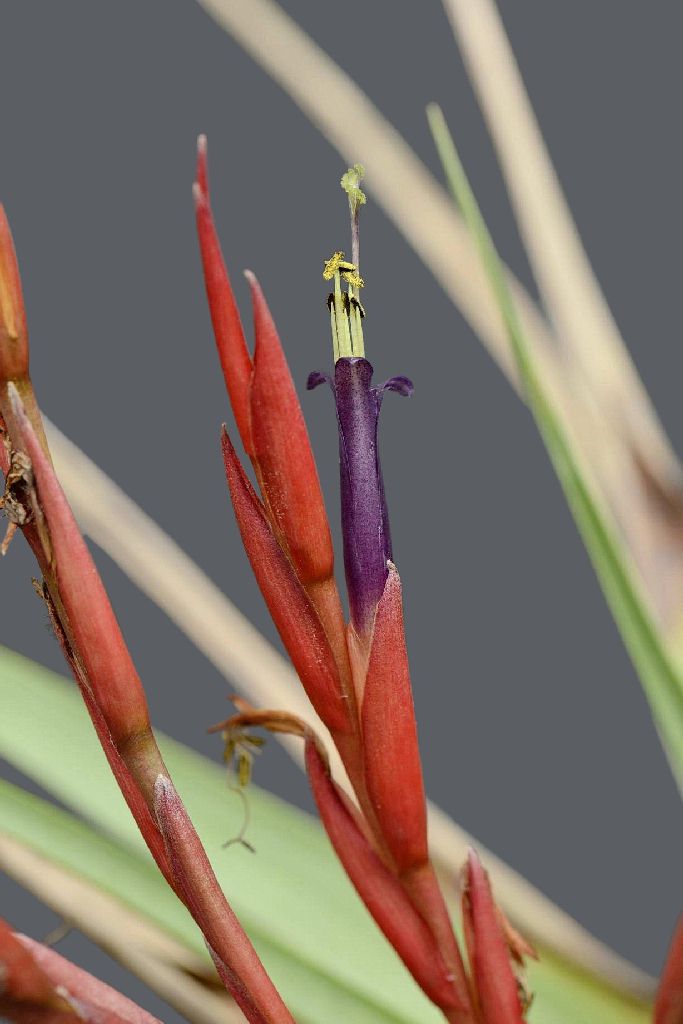
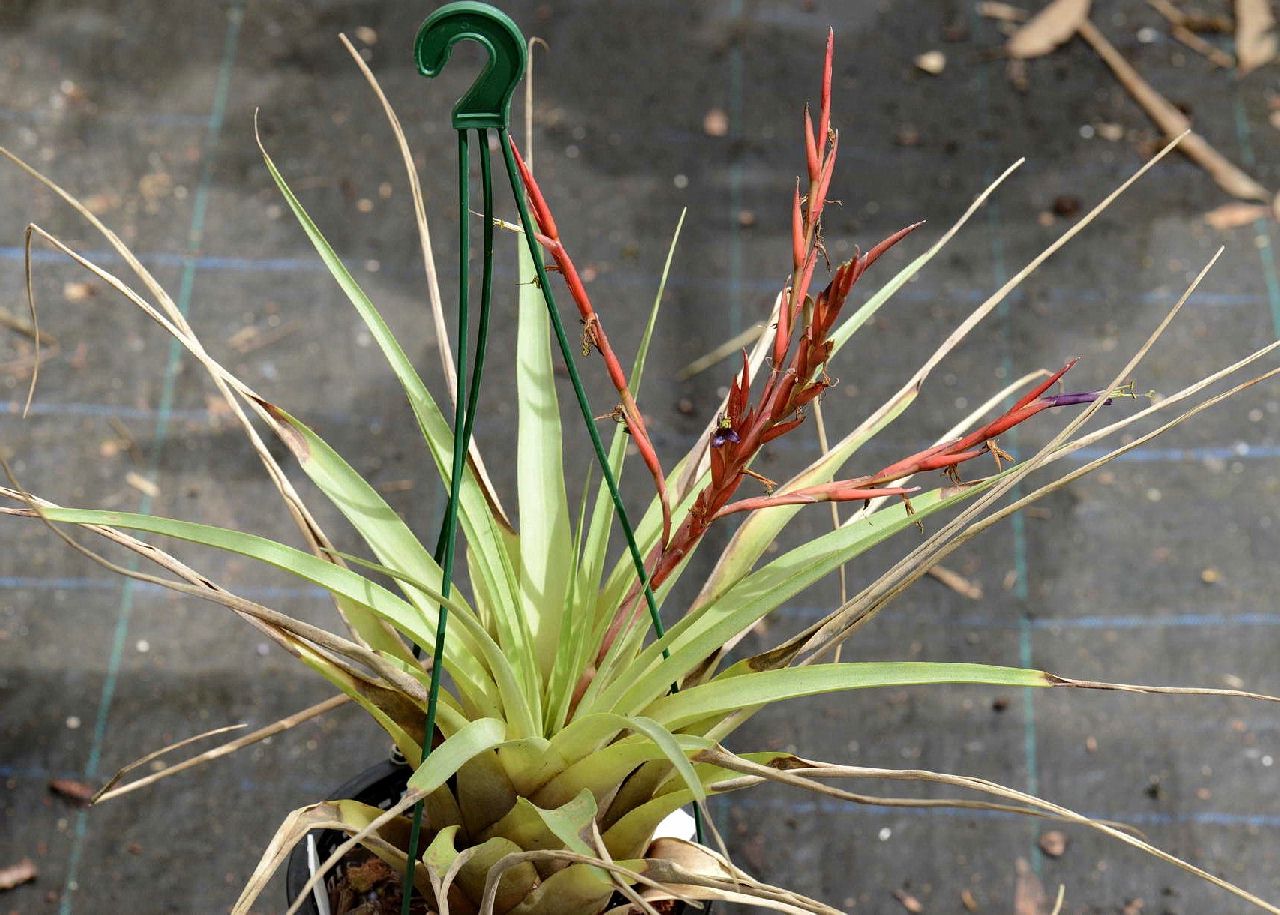
| BSI Journal |
Peter Tristram ex. Jeff Kent |
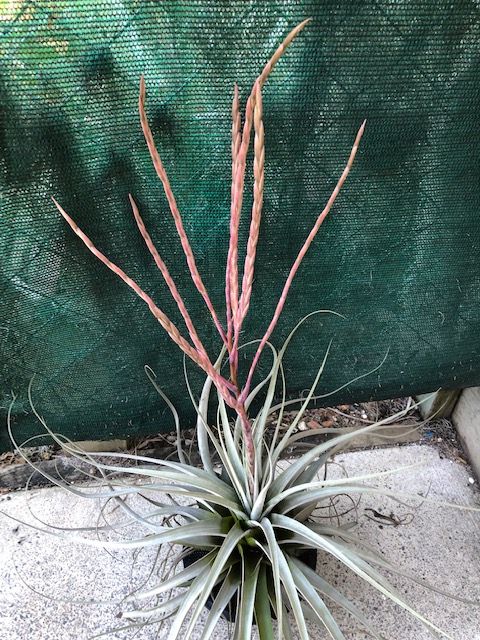
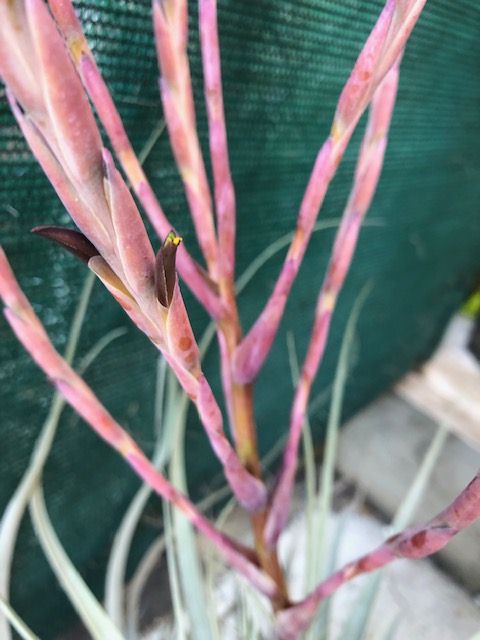
| John Olsen 05/20. "Took 10 years to flower!" werneriana?* |
werneriana?* ... Consider Peter Tristram's comments from above.... "I think I need to point out that no true werneriana were in Oz until late 2012 (only a few released since the first blooming in 2014). Any plant sold as TV werneriana before then was probably one of the forms of what Eric confirmed as TV andreetae, (labelled Vr rauhii until the TVs were moved into Tillandsia)."
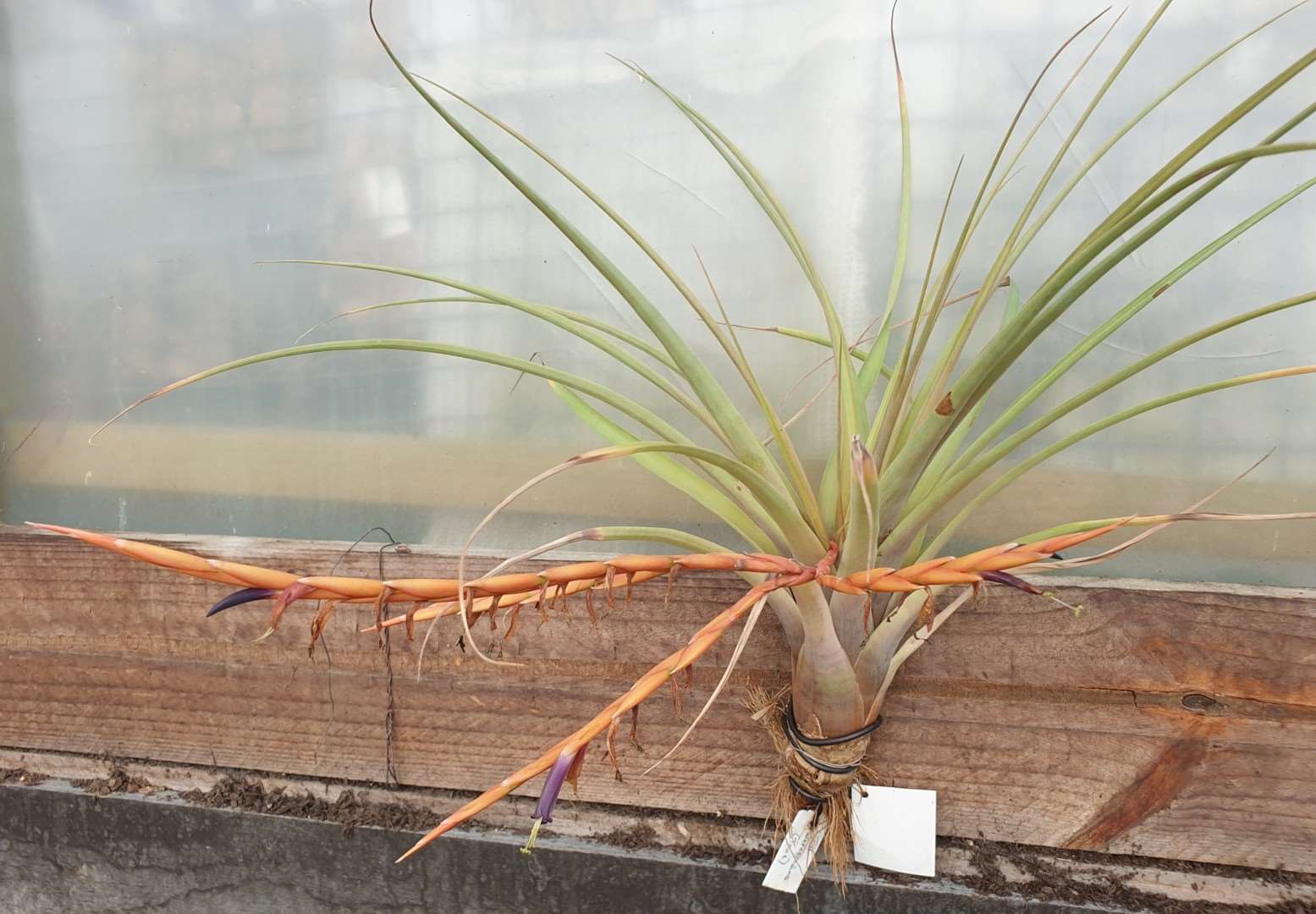
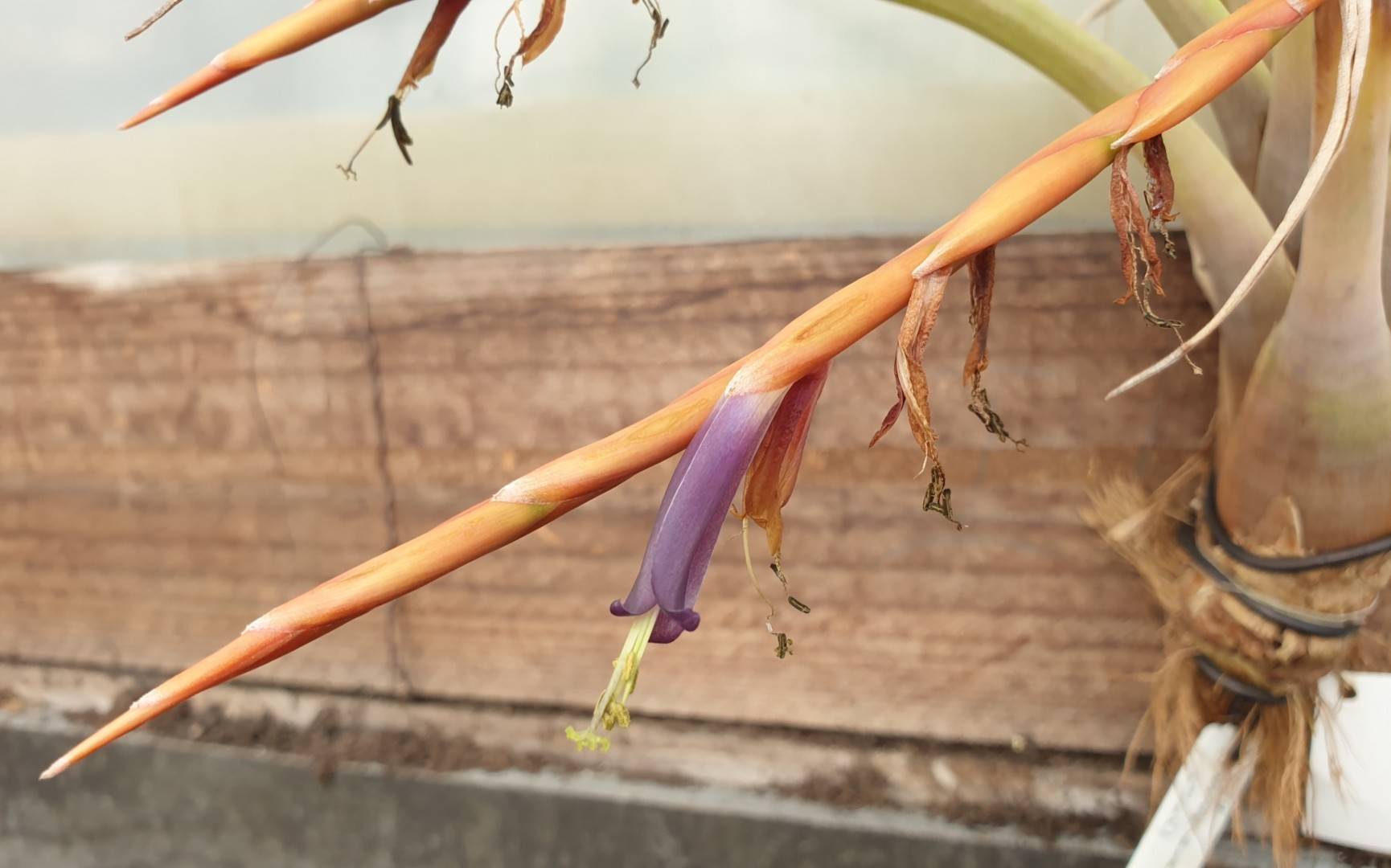
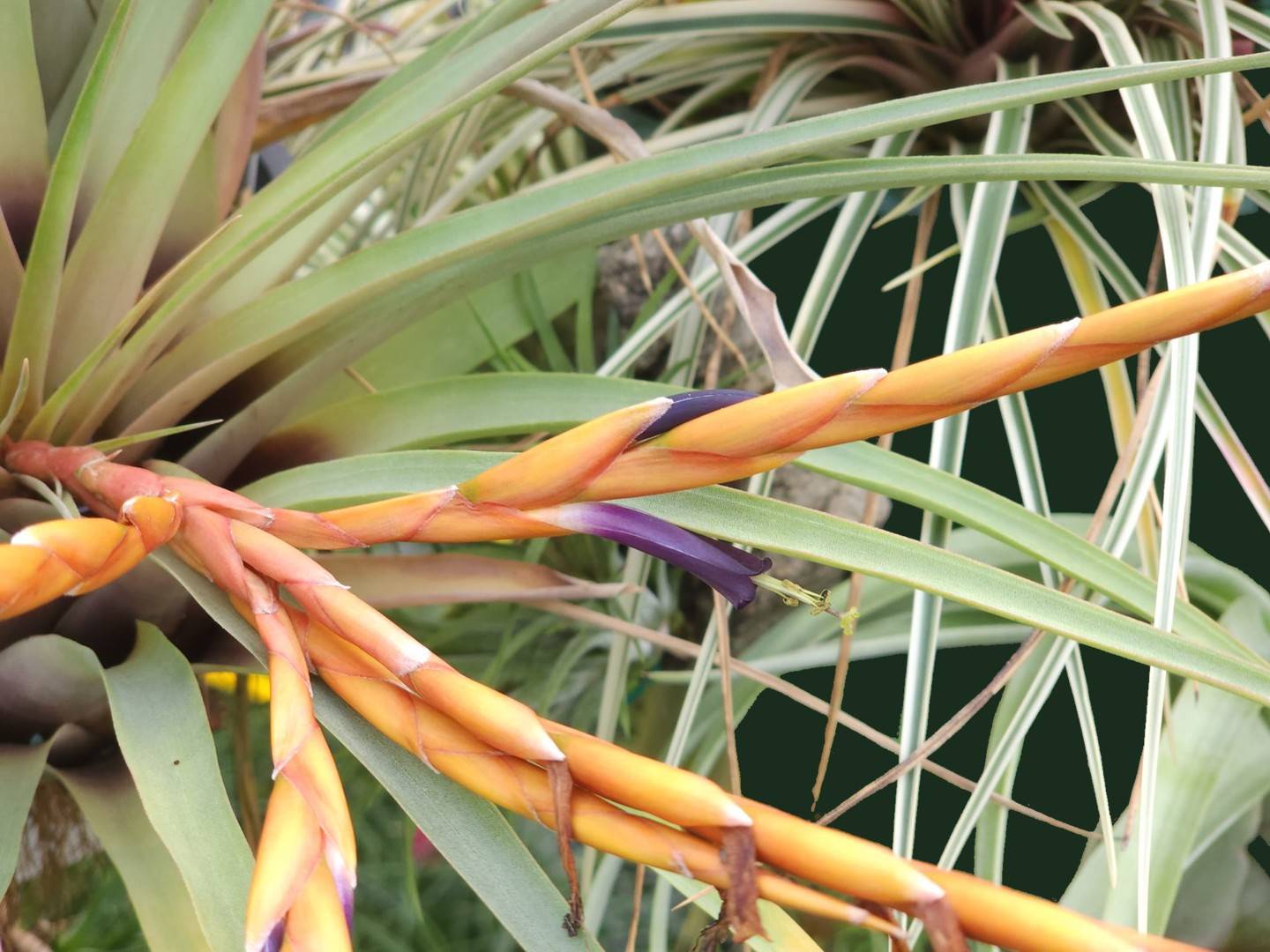

| Chris Larson 11/20 from type locality |
Chris Larson 11/22 from type locality |
Chris Larson 11/20 ... "T. werneriana ex Jeff Kent (the old Vriesea rauhii) - from the type locality. Note the colour of the bracts. If yours is bright pink it is T. andreetae. I must get it back in a pot where they grow better."
Chris Larson 11/22 ... "> There has been much conversation about T. werneriana vs T. andreettae.
I've just got T. werneriana (formerly V. rauhii) in flower at present - ex Jeff Kent from the type area. Here it is. Very different to T. andreettae."
Peter Tristram ... "A very different species for sure. We can thank Jeff Kent for his interest in species and generosity by allowing me to have a plant. Interestingly, the first "Vr. rauhii" I purchased back in the very early 80's were from Jeff. These were small, silver rosettes with stunning multibranched bright pink spikes and near black flowers. The description of andreetae was very limited referring to a single spiked form, until colonies of multibranched forms were photographed esp. in Ecuador, as discussed in this group quite a few times. Quite a few Aussies saw them in habitat too.
T. werneriana is from Peru in a more mesic area so not as silvery and hardy. It grows well with Guzmania and greener leafed Tills."
Tillandsia werneriana Grant, Phytologia 75(2): 170-175. 1993
Vriesea rauhii L. B. Smith, Phytologia 6: 194, pl. l, figs. 5, 6. 1958.
Desc. from S&D p1248
Plant flowering 6 dm high.
Leaves erect, 38 cm long, covered with minute gray closely appressed scales;
Sheaths triangular-ovate, 6-8 cm long, dark castaneous;
Blades linear-triangular, 2 cm wide, green.
Scape curved, slender, glabrous;
Scape-bracts erect and closely enfolding the scape, imbricate, elliptic, apiculate, red, lepidote, thin.
Inflorescence few-branched, digitate, 38 cm long;
Primary bracts like the scape-bracts, 4 cm long, much shorter than the densely bracteate sterile bases of the branches;
Branches suberect, flexuous, slender, shallowly excavated next the flowers.
Floral bracts erect, slightly longer than the internodes and exposing much of the rhachis, exceeding the sepals, 27 mm long, ecarinate, the apex nerved and densely pale-lepidote, elsewhere even and glabrous, subcoriaceous.
Sepals elliptic, obtuse, 18 mm long, ecarinate;
Petals much exceeding the sepals, dark violet, bearing 2 large oblong scales at base; Stamens exserted (?).
Type. Rauh P-330 (holotype US), woods near Jaen, 700 m alt, Cajamarca, Peru, 2 Sep 1956.
DISTRIBUTION. Known from the type collection only.
VRIESIA RAUHII L. B. Smith, Phytologia 6: 194, pl. l, figs. 5, 6. 1958.
A V.lopezii L. B. Smith, cui valde affinis, spicis laxioribus, sepalis minorlbus obtusis differt.
Flowering plant 6 dm. high; leaves erect, 38 cm long, covered with minute gray closely appressed scales, sheaths triangular¨ovate, 6-8 cm. long, dark castaneous, blades linear-triangular, 2 cm. wide, green; scape curved, slender, glabrous; scape-bracts erect and closely enfolding the scape, imbricate, elliptic, apiculate, red, lepidote, thin; inflorescence few-branched, digitate, 38 cm. long; primary bracts like the scape-bracts, 4 cm. long, much shorter than the densely bracteate sterile bases of the branches; branches suberect, flexuous, slender, shallowly excavated next the flowers; floral bracts erect, slightly longer than the intsrnodes and exposing much of the rhachis, exceeding the sepals, 27 mm. long, ecarinate, the apex nerved and densely pale-lepidote, elsewhere even and glabrous, subcoriaceous; sepals elliptic, obtuse, 18 mm. long, ecarinate; petals imperfectly known, much exceeding the sepals, dark violet, bearing 2 large oblong scales at base; stamens probably exserted.
Type in the U. S. National Herbarium, No. 2,251,107, collected in woods near Jaen, Province of Jaen, Department of Cajamarca, Peru, altitude 700 meters, September 2, 1956, by W. Rauh (No. P-330).
At first glance Vriesia rauhii would appear to differ from V. lopezii in its digitate inflorescence, but further material received from Dr. Lopez-Miranda shows that the latter species has both simple and digitate inflorescences.
Updated 17/12/22






















